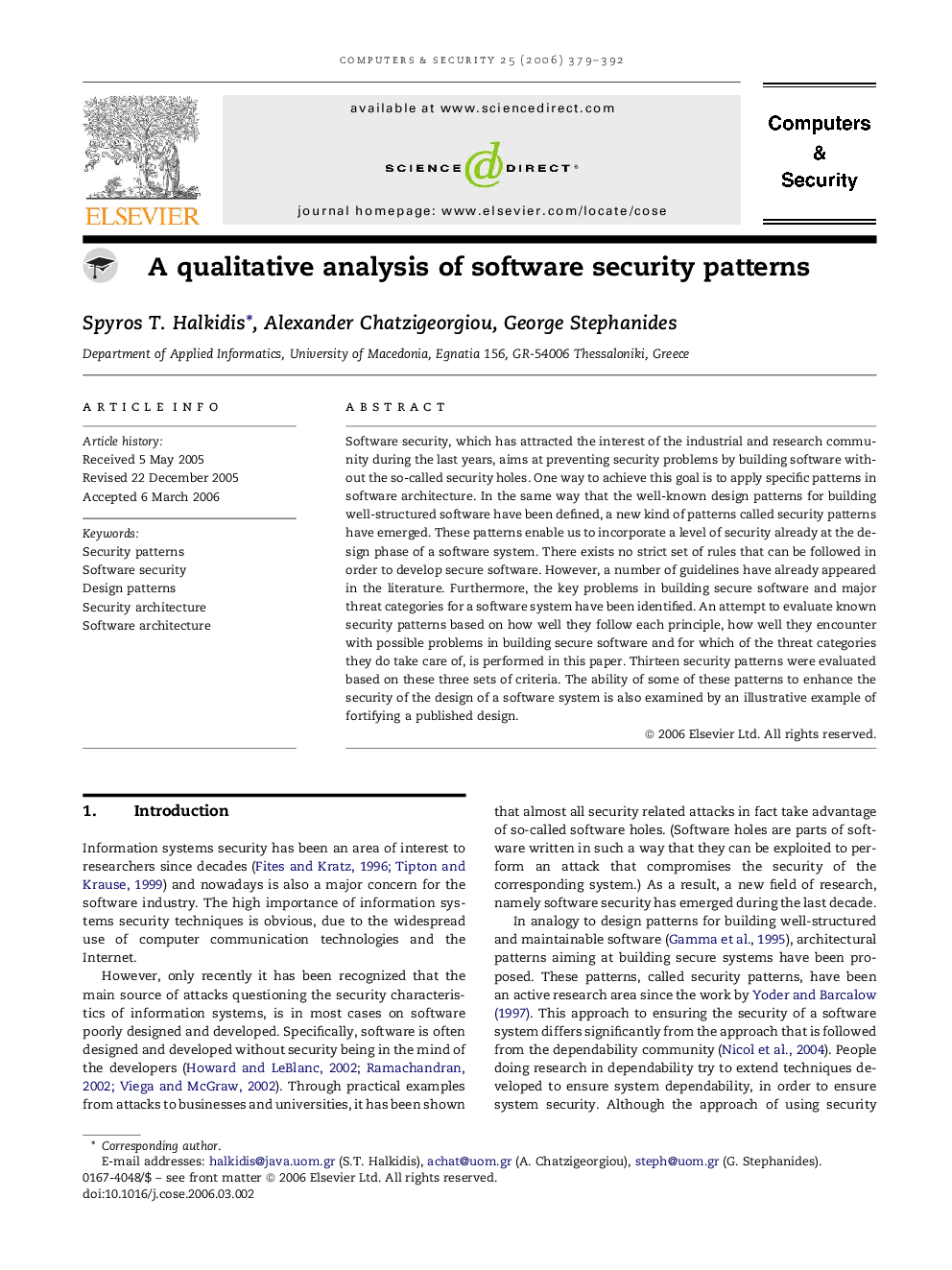| Article ID | Journal | Published Year | Pages | File Type |
|---|---|---|---|---|
| 454866 | Computers & Security | 2006 | 14 Pages |
Software security, which has attracted the interest of the industrial and research community during the last years, aims at preventing security problems by building software without the so-called security holes. One way to achieve this goal is to apply specific patterns in software architecture. In the same way that the well-known design patterns for building well-structured software have been defined, a new kind of patterns called security patterns have emerged. These patterns enable us to incorporate a level of security already at the design phase of a software system. There exists no strict set of rules that can be followed in order to develop secure software. However, a number of guidelines have already appeared in the literature. Furthermore, the key problems in building secure software and major threat categories for a software system have been identified. An attempt to evaluate known security patterns based on how well they follow each principle, how well they encounter with possible problems in building secure software and for which of the threat categories they do take care of, is performed in this paper. Thirteen security patterns were evaluated based on these three sets of criteria. The ability of some of these patterns to enhance the security of the design of a software system is also examined by an illustrative example of fortifying a published design.
